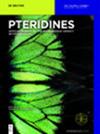Serum Homocysteine and Vitamin B12 as Biomarkers for Haematological Toxicity in Lung Adenocarcinoma Treated With Pemetrexed
IF 0.9
4区 医学
Q4 BIOCHEMISTRY & MOLECULAR BIOLOGY
引用次数: 2
Abstract
Abstract Background Serum homocysteine (Hcy) and vitamin B12 (VitB12) were investigated as serological markers for the prediction of pemetrexed induced haematological toxicity in patients with adenocarcinoma of the lung. Material and Methods A total of 35 lung adenocarcinoma patients who received pemetrexed chemotherapy as first-line treatment were included in the present study. The patients received pemetrexed 500 mg/m2 once every three weeks until disease progression. Serum Hcy and VitB12 levels were analysed prior to chemotherapy. Haematological toxicities (leucopenia, neutropenia and thrombocytopenia) were graded for each cycle of chemotherapy. Serum Hcy and VitB12 concentrations were compared between grades 0-1 and 2-4 haematological toxicity groups. Results A total of 151 chemotherapy cycles were administered to 35 lung adenocarcinoma patients. However, the serum Hcy and VitB12 concentration were only examined and recorded in 61 out of the 151 chemotherapy cycles. For the 61 cycles, grade 2-4 leucopenia, neutropenia and thrombocytopenia were observed in 21, 20 and 10 cases, respectively. Serum Hcy levels were 14.91±4.67 μg/ml, 15.50±4.35 μg/ml and 16.04±4.90 μg/ml for grade 2-4 leucopenia, neutropenia and thrombocytopenia, respectively, which were significantly higher than those of grade 0-1 groups (p<0.05). However, serum VitB12 were not statistically different between grade 0-1 and 2-4 haematological toxicity groups (p>0.05). The area under the ROC curve (AUC) were 0.73 (0.58-0.88), 0.80 (0.66-0.94), 0.75 (0.57-0.93) for serum Hcy and 0.65 (0.50-0.79), 0.64 (0.49-0.78), 0.68 (0.49-0.87) for serum VitB12 as predictive biomarkers of grade 2-4 leucopenia, neutropenia and thrombocytopenia, respectively. Conclusion Pre-chemotherapy serum Hcy appeared to correlate with haematological toxicity and may be a useful biomarker for predicting severity of pemetrexed induced haematological toxicity.血清同型半胱氨酸和维生素B12作为培美曲塞治疗肺腺癌血液毒性的生物标志物
摘要背景研究了血清同型半胱氨酸(Hcy)和维生素B12(VitB12)作为预测培美曲塞诱导的肺腺癌患者血液学毒性的血清学标志物。材料与方法35例肺腺癌患者接受培美曲塞化疗作为一线治疗。患者每三周接受一次培美曲塞500 mg/m2,直到疾病进展。化疗前分析血清Hcy和维生素B12水平。对每个化疗周期的血液毒性(白细胞减少症、中性粒细胞减少症和血小板减少症)进行分级。在0-1级和2-4级血液毒性组之间比较血清Hcy和VitB12浓度。结果35例肺腺癌患者共化疗151个周期。然而,在151个化疗周期中,只有61个周期检测并记录了血清Hcy和VitB12浓度。在61个周期中,分别有21例、20例和10例出现2-4级白细胞减少症、中性粒细胞减少症和血小板减少症。2-4级白细胞减少症、中性粒细胞减少症和血小板减少症的血清Hcy水平分别为14.91±4.67μg/ml、15.50±4.35μg/ml和16.04±4.90μg/ml,显著高于0-1级组(p0.05),血清维生素B12分别为0.68(0.49-0.87),作为2-4级白细胞减少症、中性粒细胞减少症和血小板减少症的预测生物标志物。结论化疗前血清Hcy似乎与血液学毒性相关,可能是预测培美曲塞诱导的血液学毒性严重程度的有用生物标志物。
本文章由计算机程序翻译,如有差异,请以英文原文为准。
求助全文
约1分钟内获得全文
求助全文
来源期刊

Pteridines
生物-生化与分子生物学
CiteScore
1.20
自引率
25.00%
发文量
6
审稿时长
>12 weeks
期刊介绍:
Pteridines is an open acess international quarterly journal dealing with all aspects of pteridine research. Pteridines are heterocyclic fused ring compounds involved in a wide range of biological functions from the color on butterfly wings to cofactors in enzyme catalysis to essential vitamins. Of the pteridines, 5,6,7,8-tetrahydrobiopterin is the necessary cofactor of several aromatic amino acid monoxygenases, the nitric oxide synthases and glyceryl ether monoxygenase (GEMO). Neopterin plays an essential role in the immune system and is an important biomarker in laboratory medicine for diseases such as HIV, cardiovascular disease, malignant tumors, among others.
Topics:
-Neopterin, dihydroneopterin, monapterin-
Biopterin, tetrahydrobiopterin-
Folates, antifolates, riboflavin-
Phenylalanine, tyrosine, phenylketonuria, serotonin, adrenalin, noradrenalin, L-DOPA, dopamine, related biogenic amines-
Phenylalanine hydroxylase, tyrosine hydroxylase, tryptophan hydroxylase, nitric oxide synthases (iNOS), alkylglycerol monooxygenase (AGMO), dihydropterin reductase, sepiapterin reductase-
Homocysteine, mediators of inflammation, redox systems, iron.
 求助内容:
求助内容: 应助结果提醒方式:
应助结果提醒方式:


